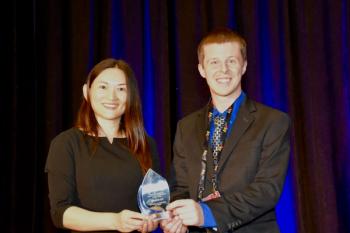
Examining the Role of Elemental Analysis on Geochronology
At the Winter Conference on Plasma Spectrochemistry, George Gehrels of the University of Arizona highlighted his work using LA-ICP-MS and elemental analysis techniques to study zircon crystal.
George Gehrels of the University of Arizona presented a talk on high resolution age and isotopic mapping using laser ablation inductively coupled plasma tandem mass spectrometry at the Winter Conference on Plasma Spectrochemistry in Tucson, Arizona on Jan. 15.
Gehrel’s research is in the field of geochronology, or the study of rocks, minerals, and sediments, using the spectral signatures in the rocks to determine the age of specific geological events. Geochronology as a discipline could help “tell the times when events happened in the past,” Gehrels said, which include the formation of mountains, volcanic eruptions, and when sediment accumulated (1).
Zircon (ZrSiO4) is one of the main minerals used in geochronology to study geological phenomenon. Zircon is common in many rock types. The durable mineral often contains significant traces of uranium and thorium, and minimal traces of lead (1). Zircon also has the unique property of retaining uranium, thorium, and lead at high temperatures.
Gehrels discussed how imaging is conducted with zircon and the challenges that come along with it. One of the main challenges is that to ensure accurate chronological dating, the lead in the crystal, especially if the lead came after the crystal formed, cannot be removed (1). If the lead is removed, the age of the crystal will report inaccurately. Gehrels highlighted three instruments that can conduct zircon geochronology: an isotope dilution-thermal ionization mass spectrometry (MS) instrument, a secondary ion mass spectrometer, and an LA-ICP-MS instrument (1).
When conducting imaging analysis on zircon crystal, he described a process called cathode luminescence, which helps illuminate through bright and dark spots in the imaging scans where there was low or high radiation damage (1). Mapping using LA-ICP-MS analysis is a little different. The main variables, such as spatial resolution, precision, and the duration and cost of analysis, need to be taken account, so that each pixel is a separate analysis (1).
Gehrels also discussed the current challenges related to analyzing zircon crystal. He focused primarily on the software and instrumentation needs. An ICP-MS instrument needs to have both high efficiency and sensitivity to conduct the most thorough analysis (1). Currently, the instrumentation available to geologists is not efficient at conducting scans of zircon crystal. For software, Gehrels stated that new software for geochronology applications need to be able to deal with aliasing and can view and integrate many large images (1). The software also needs to have statistically based tools, be user-friendly, and it has to be community developed and findability, accessibility, interoperability, and reusability (FAIR) compliant (1).
Reference
(1) Gehrels, G. High Resolution Age and Isotopic Mapping by LA-ICP-MS. Presented at the Winter Conference on Plasma Spectrochemistry in Tucson, Arizona, January 15th, 2024.
Newsletter
Get essential updates on the latest spectroscopy technologies, regulatory standards, and best practices—subscribe today to Spectroscopy.




